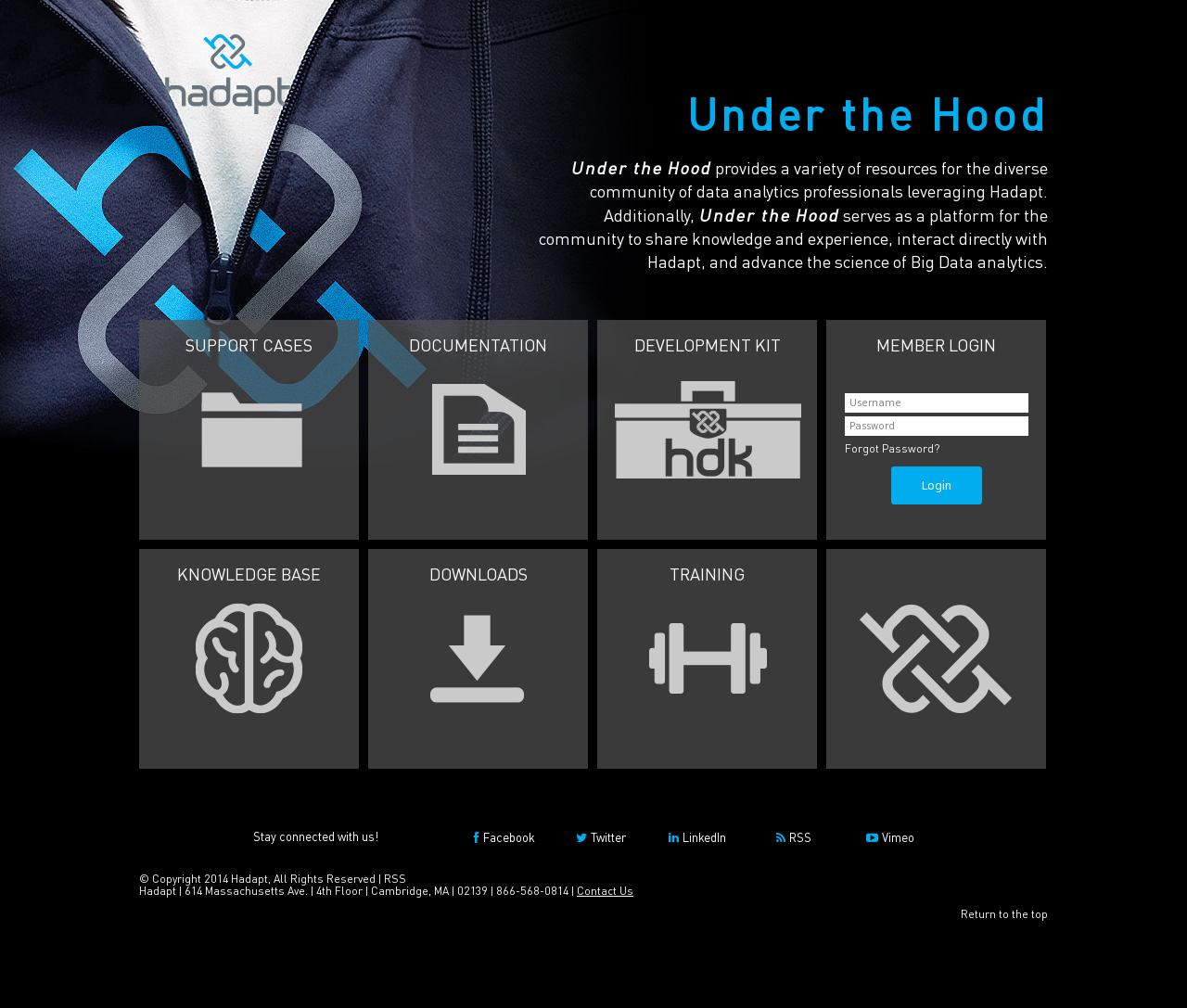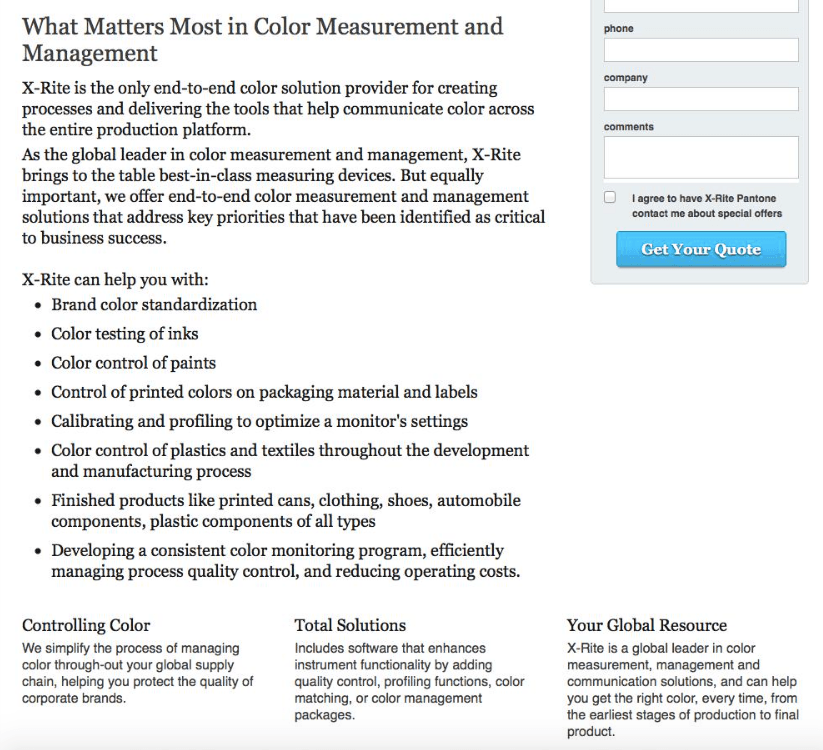
The B2B world can feel quite stiff sometimes. And while we all technically know that it doesn’t have to be that way, we find ourselves defaulting to that stiffness within our marketing, over and over again. Because even if we do want to be fun, we still need to be professional. What if our readers don’t find our jokes funny? We figure it’s best to play it safe.
This is totally respectable—except when you “play it safe,” everything you write defaults to boring, and you’re back where you started: unhappy with your brand’s voice but unsure how to improve it.
Especially if you’re not a writer and haven’t been trained in the nuances of copywriting, coming up with something as lofty and intangible as a brand voice seems like a joke. Where do you even start with such a thing?
Not to get too metaphysical on you, but your brand’s voice is already there—it exists in your company, the reasons it was founded, and how you conduct yourselves in your day-to-day work. You don’t have to worry so much about creating it as you do simply uncovering it.
“When you write like everyone else,” said Jason Fried on Inc., “you’re saying, ‘Our products are like everyone else’s, too.’ …Would you go to a dinner party and repeat what the person to the right of you is saying all night long? Would that be interesting to anybody?”
This is why it’s so important to start uncovering your brand’s voice and defining it with a set of rules that each person who writes something public for your company can follow.
I’m not talking about grammar or rules like writing out the word “and” instead of using “&.” I’m talking about stripping away the “play it safe” pillow fluff that we so often fill our writing with in an attempt to keep things professional. When you strip that away, you’ll start to notice certain patterns you can write down and adhere to.
Suddenly, you’ll realize you don’t sound like everyone else anymore—you sound like you. And when what you publish sounds like yourself? It feels really, really good, and people start to take notice. They’re just as tired of the B2B business-sounding stiffness as you are.
1. Take an Axe to the Fluff
Let’s start with editing. We’ll work with what you’ve already got to set your foundation and make what you publish in the future even better.
Go through the all the pages on your site (not just your blog), and get rid of words and phrases that are too intangible to mean anything. If you’ve got a complex business with lots of pages, try to edit at least three pages here.
For example, if your home page hero slogan says something like, “Industry standardized methodology to execute customized products,” re-work it into something tangible that actually makes sense to someone who doesn’t spend eight hours per day working in your office. (I’ve become really good at decoding B2B speak, but even I’m not sure what that means.)
Something better for this example brand (which apparently makes mobile apps) to say instead could be, “The best production process to guarantee your new app kicks ass.” Now you know what they actually do. This kind of wording sounds more like something you’d look for if you wanted to get a mobile app created.
Take time to do this with at least three pages. Notice which phrases you find yourself replacing often and what you replace them with. Note them in a separate document, which you’ll use in step #5.
2. Replace Long Words With Short Ones
As in the first step, shorter words help with understanding. While this may not have the most obvious impact on your brand voice, you will see your brand’s personality start to poke through when jargon isn’t there to cover it up.
“As children, we learn shorter words first,” said Dr. Andrew Bredenkamp. “So, if you want to be understood clearly by people of all reading levels, use shorter words… Shorter words tend to be punchier and harder, while longer words can give a softer, more relaxed effect.”
Again, take note of the long words you had a tendency to default to before, what you replace those words with, and how much stronger the writing and brand voice comes across with the shorter words in place. Note those, too.
Example: When, “Our solutions improve productivity, identify KPIs, and increase profits,” becomes, “Our software helps you identify and reach your most important goals while making more money,” the company behind those words starts to feel more relatable, doesn’t it?
Pro tip: Use contractions wherever possible. They make the reading experience feel more conversational because they mimic the way we speak one-on-one.
3. Don’t Be Afraid of Colloquialisms
If your business isn’t overly serious, using an “improper” colloquialism here and there can go a long way. They aren’t what people expect to read on B2B websites, but since they are a part of natural, comfortable speech, they break typical B2B thought patterns and help readers feel like they can relate to you.
“Under the hood” is a colloquialism associated with cars, but here, a data analytics company uses it as their brand name to convey their feeling and their voice from the get-go.

Take care using colloquialisms if you’re an international brand, but don’t write off the idea altogether, either.
Further, even if you don’t use colloquialisms at all or all that much, knowing which ones fit into your brand’s personality can help new writers for your company understand and connect to the “feel” that you’re going for while writing.
In your notes, write down the colloquialisms that you feel are a fit for your brand, and make notes next to them about why they fit, as well as why you did or didn’t decide to publish them.
4. Keep It Brief
If you keep rambling on about your service’s benefits and features, people are going to lose interest and click off no matter how great you are.
Take a look at this B2B landing page for printing. It rambles on, it’s boring, and there’s not much here that is memorable—let alone that would get people to fill out that contact form on the right.

What if, instead of the long bulleted list, they just promised, “We get your colors right. Every single time.” That’s what their target market cares about—not calibrating monitor settings (yawn).
Cut down what you’re saying to the absolute essentials and nothing more. This is particularly important on static pages. Wordiness is just laziness in print. You can’t afford to slack off when it comes to getting your brand voice to shine through your writing.
As you’re deleting unnecessary sentences and phrases, paste those things you delete into that note file you’ve been keeping.
[contextly_auto_sidebar]
5. Create a List of Guidelines and Keep Adding to It
Uncovering what makes up your brand voice is not a one-and-done kind of exercise. You’ll get a good start, but you’ll also keep making progress over time.
Take the notes you’ve written down in steps 1–4, and categorize them into different subheadings. Use these to make rules for yourself and other writers in your company to follow.
Each time you write something new, open your guidelines, and follow them. When you notice something helpful that could be added, put it in there. Share the list with other writers, and see if they have suggestions that would help you hone your brand’s voice into the voice you’re after—the one that’s undeniably your company.
Getting to That Juicy, Fun Voice Your Audience Craves
B2B voices can be so boring and dry that your audience can become desperate for something that’s even slightly juicy.
Don’t expect to plow through these four exercises in 20 minutes and be publishing viral blog posts by tomorrow. It’s a long game, but one that’s definitely worth it. Just consider the alternative!
Nevertheless, it may be daunting to start. Here’s a few examples of B2B brand voices that are rocking it for you to draw inspiration from:
- Freshbooks: Aimed at businesses too small to hire one person dedicated fully to accounting, Freshbooks keeps the complicated world of accounting simple with an easy-to-understand and upbeat tone that appears to be written by people from within their target audience. Totally relatable.
- MailChimp: Explaining things like the backend of email marketing campaigns can get really boring really fast. MailChimp ropes people in on their features page with their extreme practicality, but keeps you around with their quirkiness. (I’m a huge fan of the on-screen high five I get each time I send out a campaign.)
- American Airlines: The way American Airlines sells their Business Extra program is incredibly practical and no-nonsense without getting boring. They know they’re talking to managers who are budget-conscious, so they sell them on the economic benefits, their partner airlines, and testimonials from other business travelers.
Often, you’ll find that simply starting to work on uncovering your B2B brand’s voice will create an avalanche effect of inspiration to get going and start figuring out how to put your company’s personality into words.
Get more content like this, plus the very BEST marketing education, totally free. Get our Definitive email newsletter.

